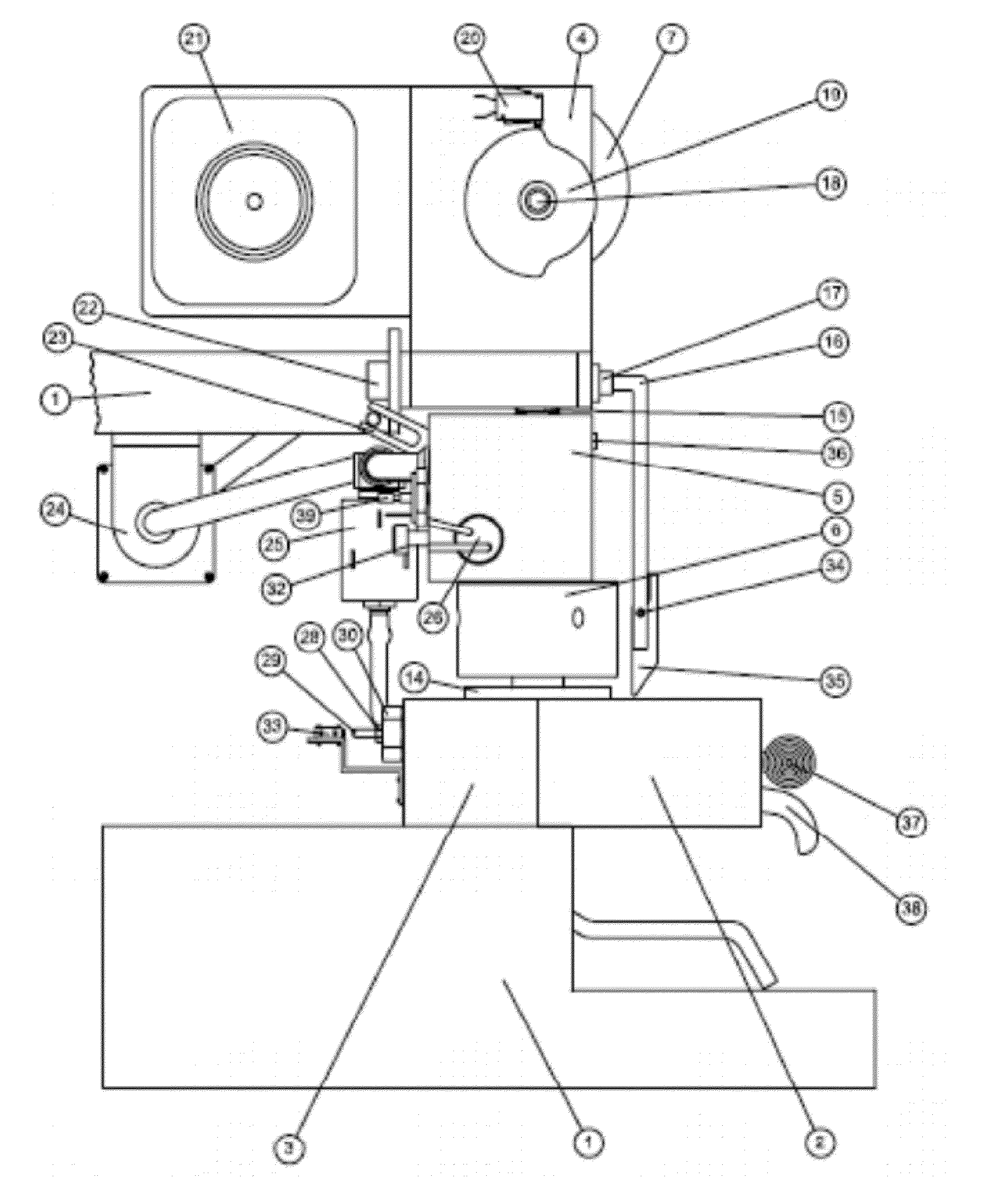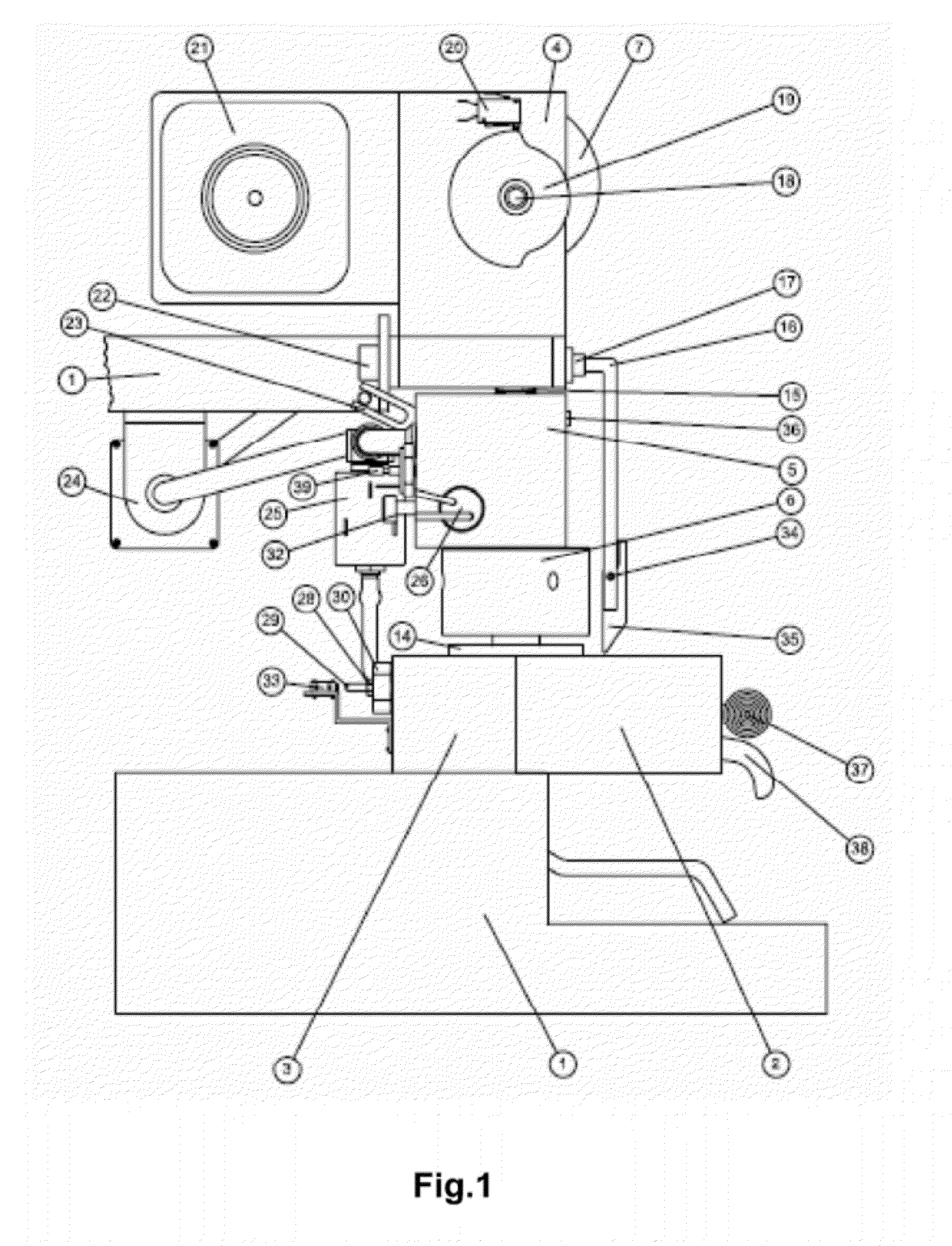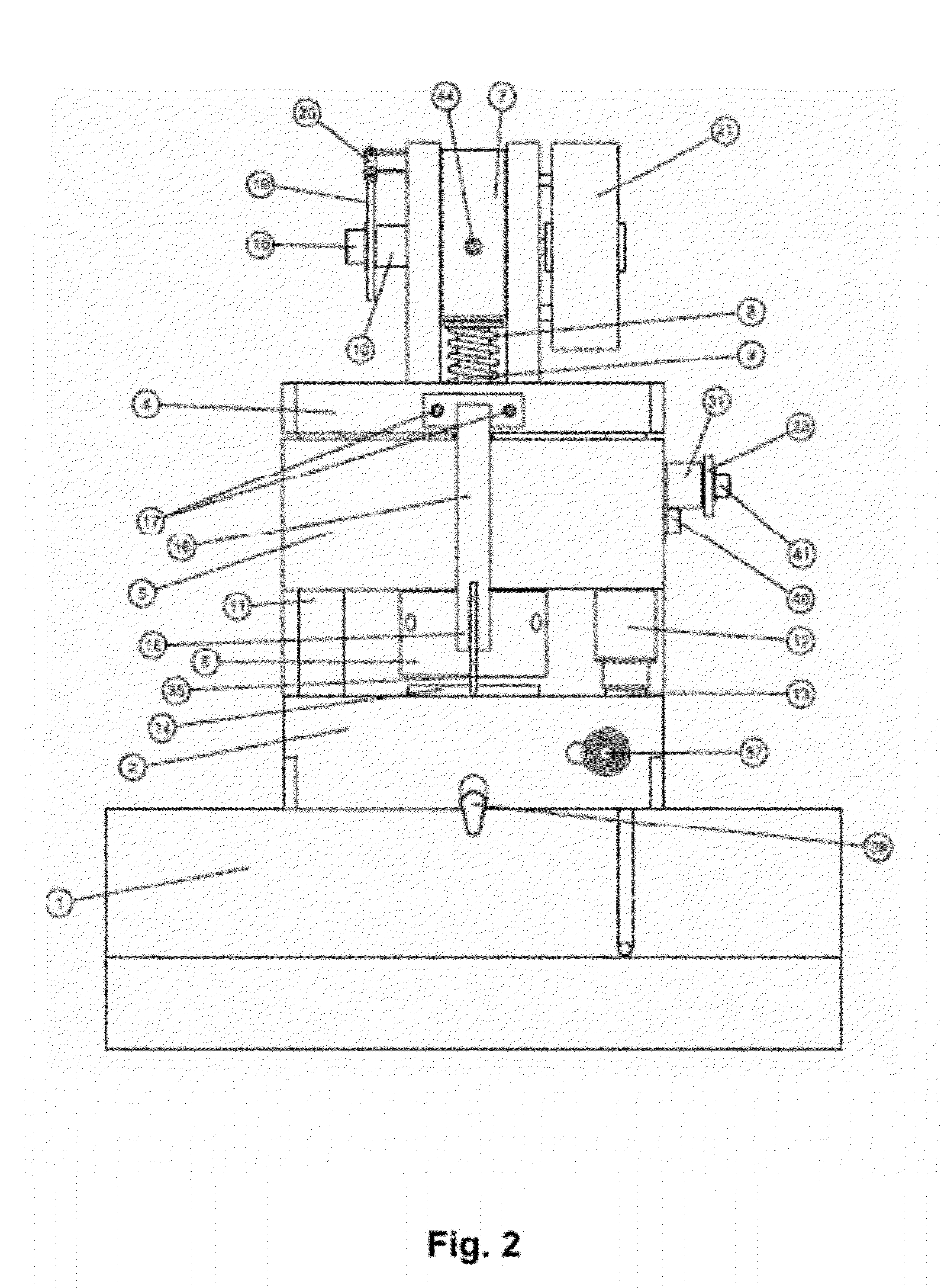Coffee machine with losing filter or capsule
a coffee machine and filter technology, applied in the field of coffee or espresso machines, can solve the problems of unreliable capsule filling/disposal system, water leakage and scaling inside the machine, and poor quality of the final product and a good clamping, so as to reduce the number of manual operations
- Summary
- Abstract
- Description
- Claims
- Application Information
AI Technical Summary
Benefits of technology
Problems solved by technology
Method used
Image
Examples
Embodiment Construction
[0024]Referring to the drawings, and particularly to FIGS. 1, 2 and 3, the espresso machine consists of a chassis 1, a capsule-holder body comprising a rotating part 2 and a fixed part 3, equipped with a knob 37, a brewing spout 38, a sensor shaft 29, a micro-switch 33 and front extractor 35 which can lodge a disposable filter or capsule 14, a heat exchanger 5, with electro-pump 24, electro-valve for water delivery 25, a heater 26 and thermostat 39, a piston 31 and related ciclers 43, tappet 9 and an accelerator 31, a pressure cam 7, and a coffee brewing cam 19 with micro-switch 20, both controlled by an electro-motor 21, supporting means, fixing means, regulation and sealing means.
[0025]With the machine in stand-by, the pressure cam 7 is at the top dead center (Phase A in FIG. 5). This cam connected to the motor shaft 10 by means of a threaded dowel 44 rotates inside the motor flask 4; on the same shaft the coffee brewing cam 19 is connected by means of a screw 18.
[0026]By means of...
PUM
 Login to View More
Login to View More Abstract
Description
Claims
Application Information
 Login to View More
Login to View More - R&D
- Intellectual Property
- Life Sciences
- Materials
- Tech Scout
- Unparalleled Data Quality
- Higher Quality Content
- 60% Fewer Hallucinations
Browse by: Latest US Patents, China's latest patents, Technical Efficacy Thesaurus, Application Domain, Technology Topic, Popular Technical Reports.
© 2025 PatSnap. All rights reserved.Legal|Privacy policy|Modern Slavery Act Transparency Statement|Sitemap|About US| Contact US: help@patsnap.com



